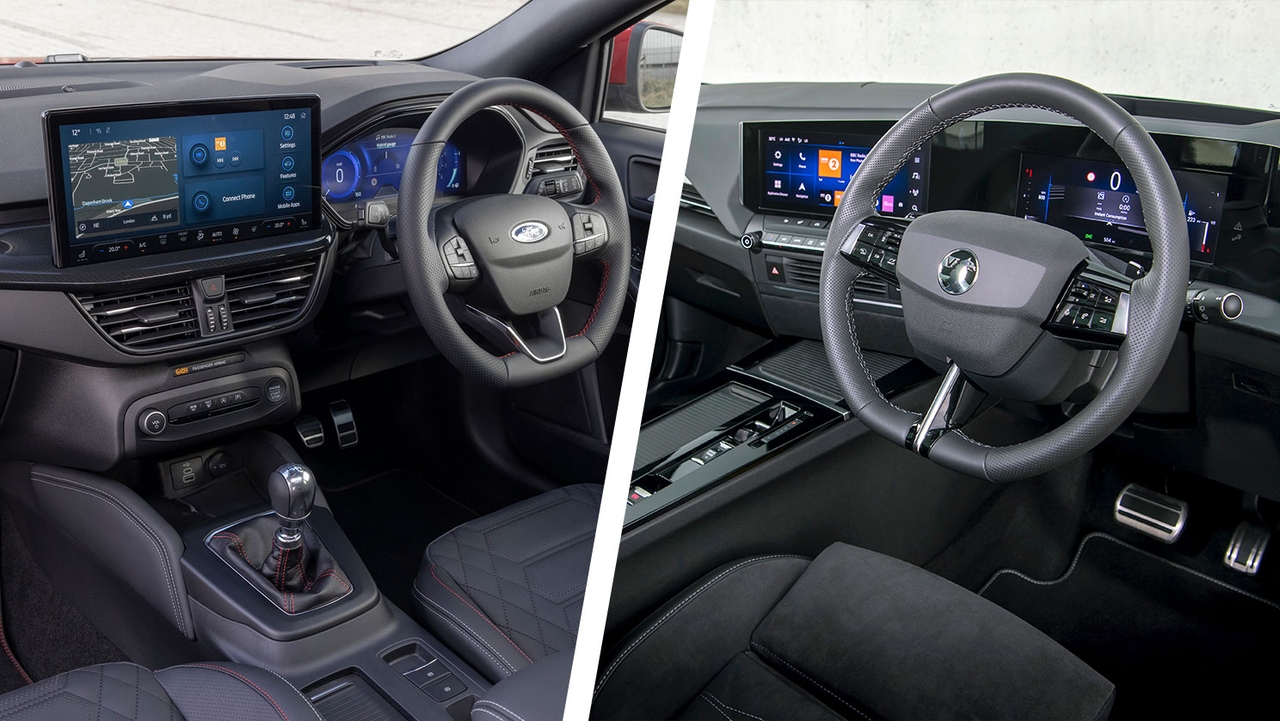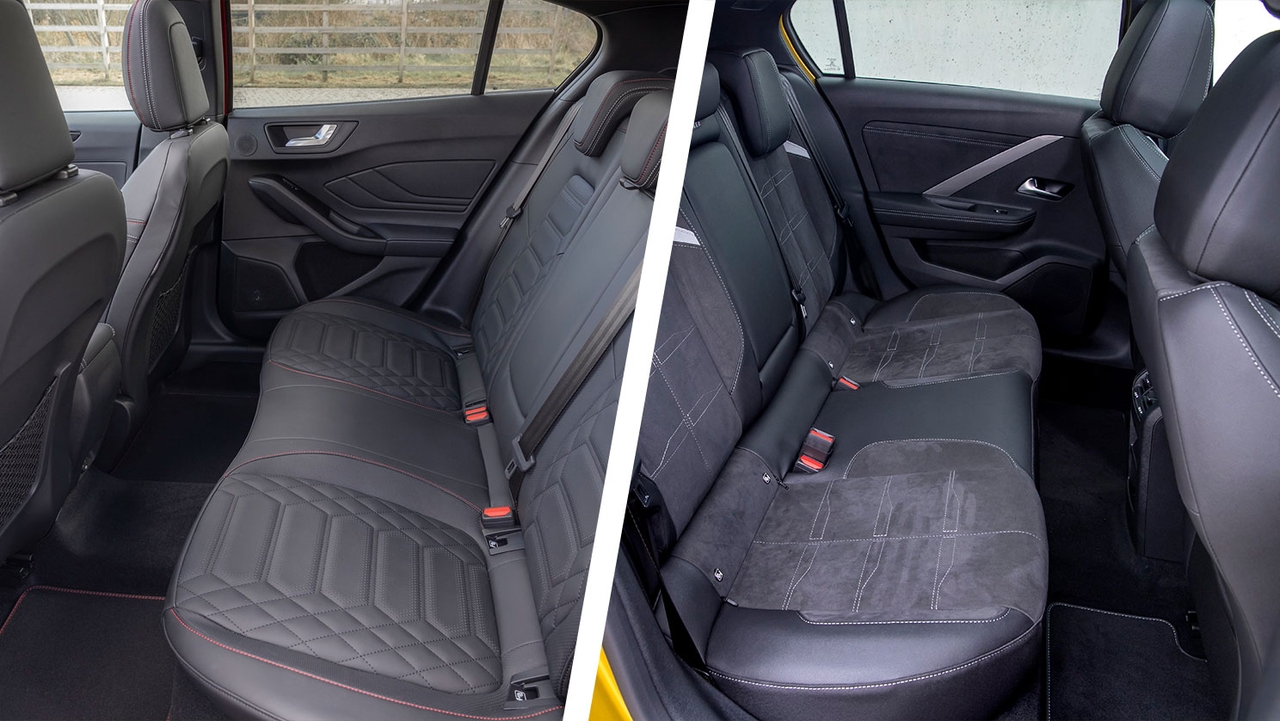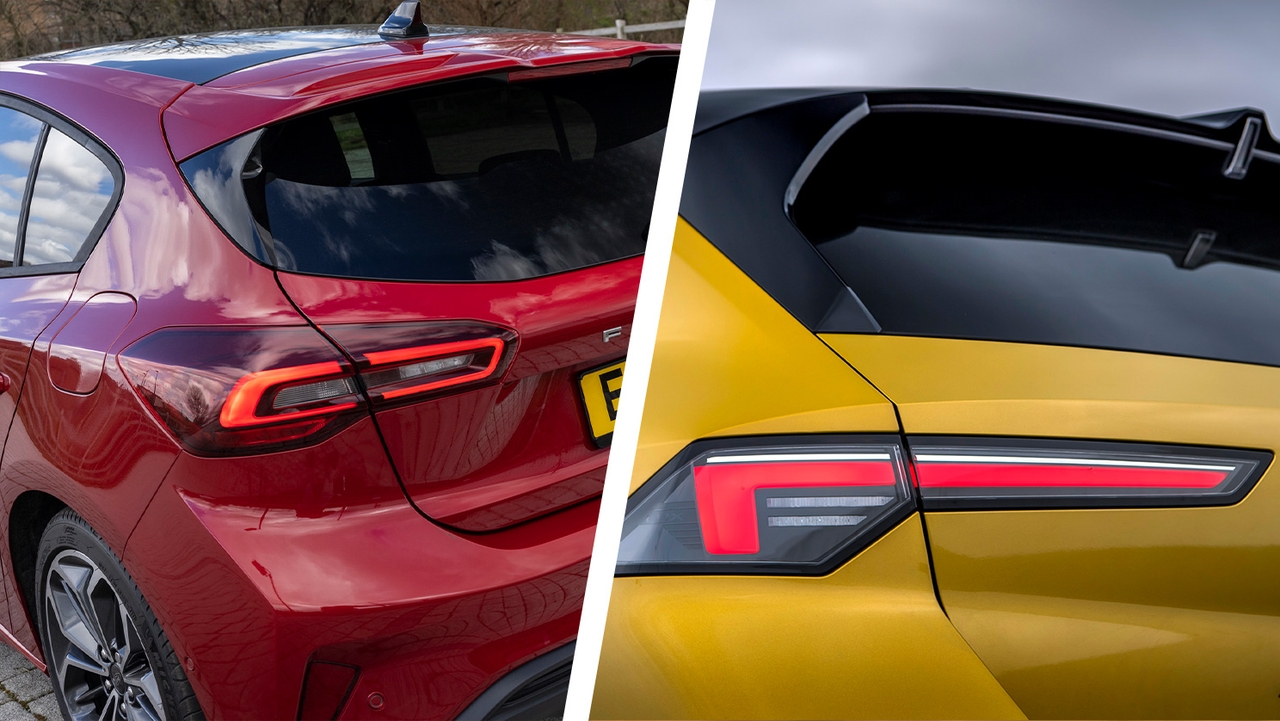We could’ve written this guide any time in the past 25 years, but the Focus and Astra are still two of the best family hatchbacks you can buy. Even if many buyers are turning away towards SUVs.
We’re actually a little bit surprised you’re searching for this comparison, but the good news is that the latest Vauxhall Astra and Ford Focus are the best versions yet. So if you’re not swayed by an SUV, giddy over a Golf or bouncing towards a BMW, the familiar Focus and Astra will do you right.
If you’re struggling to decide between them, you could either point at both and say eeny-meeny-miney-mo, or you could skim to the bottom of this page to see which is better.
Ford Focus vs Vauxhall Astra compared
| Ford Focus | Vauxhall Astra |
Pros:
| Pros:
|
Cons:
| Cons:
|
Styling and design

When the current Ford Focus launched in 2018, it had a happy, inoffensive face that was a clear reinterpretation of the Focus that came before it. The Focus was updated in 2022 with newly angled headlights and a bigger grille that makes the car look moodier. A bit like it’s peeved at traffic in front.
In time, familiarity will no doubt dull the Astra’s strong design, but for now it’s a real looker. Its defined bonnet crease, vertical third brake light and the way the grille and headlights sweep into one big panel make the Astra a much more eye-catching machine. We think it needs the black roof and big wheels of GS or Ultimate trims to make the most of its futuristic looks, though.
Interior and practicality

It’s a similar story inside. The Astra looks that bit more modern than the Focus in the cabin, with Vauxhall’s Pure Panel display incorporating two large screens in one area that stretches across half the dashboard. Meanwhile, the Focus started out with an eight-inch touchscreen, which looked neat at the time but now looks a bit small. Ford’s answer was to fit a whopping 13-inch touchscreen into the new Focus, and make the driver’s dial cluster digital as well.
Neither of these cars offers the premium materials you’d get in the likes of the Mercedes A-Class and BMW 1 Series, but both offer just the right sort of materials and quality you’d hope for in a nearly new car. There are a lot of harder plastics lower down, but these should last well against muddy shoes and biscuit crumbs. Both offer a sporty trim (ST-Line for the Ford, GS/GS Line for the Vauxhall) with racy red accents and stitching.

Further back, the Focus beats the Astra for rear passenger space but the Astra wins for boot space. In practice we’re not totally sure how often you’d notice the difference between the 422 litres in the Astra and the 375 litres in the Focus; both will happily swallow a weekly shop or a pushchair. You can get both these cars as longer estate models with almost 600 litres of boot space apiece – handy if you carry a lot of stuff.
Engines and performance
Small turbocharged petrol engines make up the bulk of each car’s engine lineup. The Astra’s 130hp 1.2-litre petrol is one of our favourite small engines, feeling more responsive and powerful than its size might suggest. There’s also a 136hp hybrid that replaces the old 1.5-litre diesel.
Ford’s 1.0-litre EcoBoost petrol is also a great little engine, and comes with mild-hybrid tech to reduce fuel consumption. Available in outputs of 125hp and 155hp, the Focus will return around 50mpg – about the same as you can expect from a petrol Astra. Performance is roughly the same, too, with 0-62mph typically taking nine or 10 seconds in both these cars.

But there’s a full selection of electrification available to Vauxhall buyers, because the Astra is also offered as a plug-in hybrid and even as a fully electric model. When we drove the PHEV, we were impressed by its eagerness and the smooth way it slipped between petrol and electric power; the electric Astra should be even smoother and offers a range of over 250 miles.
Driving
The Astra is good, the Focus is better. But the difference isn’t night and day – the Focus’ handling is slightly sweeter and it’s a little keener to change direction. The majority of drivers would be perfectly happy with how the Astra drives, because it’s pretty decent in isolation. There’s a good rhythm at higher speeds and it’s good around fast corners.
We found that the Astra had a firmer ride than the Focus, although the difference might not be so noticeable if you don’t mind the smaller wheels of the Astra Design spec.
Value and reliability

Every new car seems to be vastly more expensive than the same car a few years ago, but the Astra’s pricing as a new car is particularly punchy. Some of the plug-in models soar above £40,000 – out of the reach of many private buyers – but the good news is that used Astras are much better value.
In fact, a year-old Astra plug-in hybrid in the desirable GS trim is roughly the same price as a year-old 1.0-litre Focus in the equivalent ST-Line X trim, so you’re getting a more powerful – and potentially more economical – car for the money.
The three-year/60,000-mile warranty offered by both Vauxhall and Ford is the least you can expect from a new car. You can buy an extended warranty to continue the peace of mind. We’ve not heard of any major reliability issues with either car, though – follow the manufacturer’s scheduled maintenance requirements and these cars should give years of happy motoring.
Which is best?
The Focus is the slightly more engaging car to drive, has more rear seat space, a wider range of trim levels to choose from and – because the Focus came out earlier than the Astra – a cheaper price for a current-shape model. But compare equivalent-aged cars and the Astra is better value, and you’re getting a newer-feeling car for the money. The Vauxhall is also the one to pick if you want to jump to electrification. Overall, the Astra just slightly edges this head-to-head.
For a more in-depth look at both these cars, read our Ford Focus review and Vauxhall Astra review. Or shop our used Ford Focus and used Vauxhall Astra cars for sale, available to buy or finance from a Motorpoint store of your choice.

































